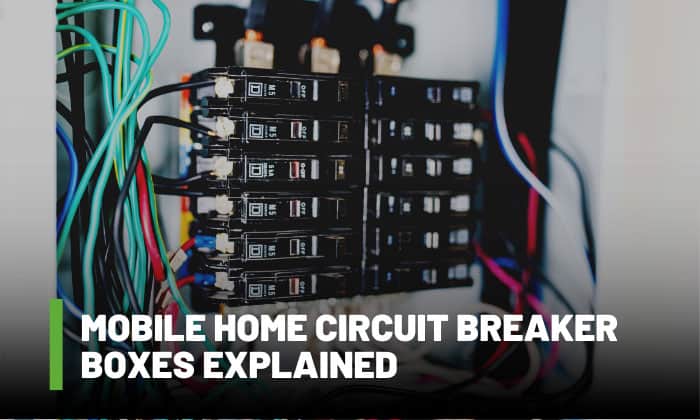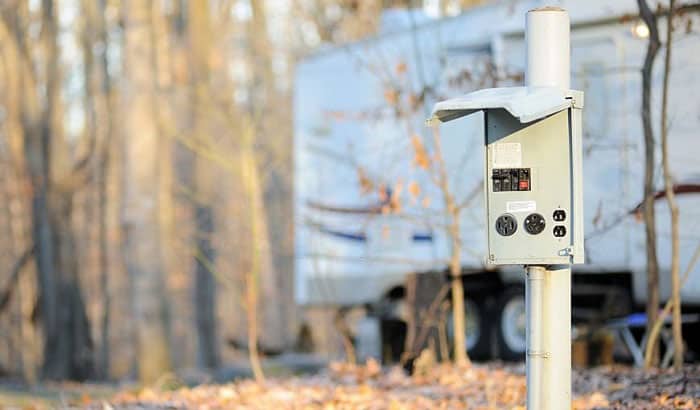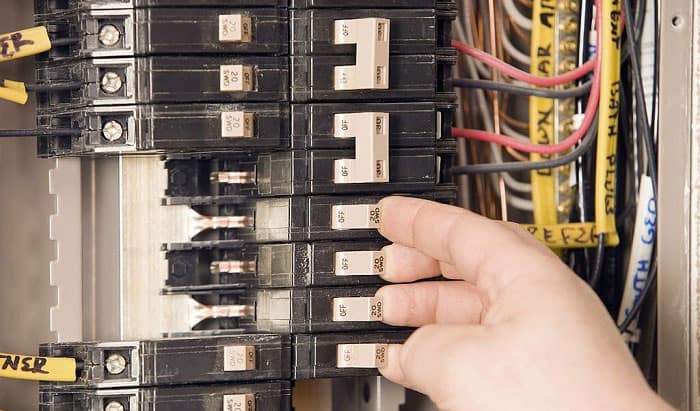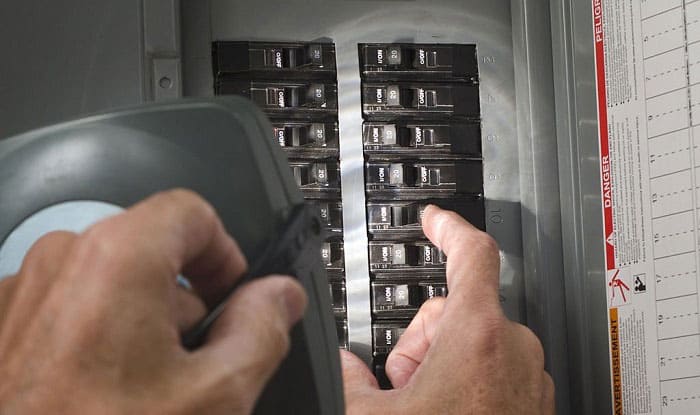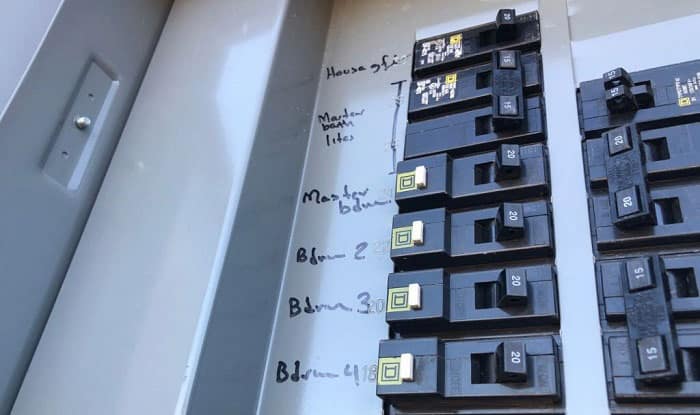Home is wherever we feel the most comfortable. For some people, the place they consider their home would be a townhouse or condo. However, others consider their RV their residence.
If you’re someone who’s seeking to live in a mobile home, it is important that you know how its electrical system works.
Hence, I wrote this article to help you in this matter – the info here should have mobile home circuit breaker boxes explained in a detailed manner.
To answer briefly: mobile home circuit breakers work like their traditional counterparts, with the only distinction being that they are installed on vehicles.
Table of Contents
- What is a Mobile Home Electrical Box?
- How Does a Mobile Home Fuse Box Work?
- Pros and Cons of a Mobile Home Indoor Breaker Box and Its Outdoor Counterpart
- How Much Does It Cost to Replace and Upgrade a Mobile Home Circuit Box?
- How Many Amps Does a Mobile Home Need?
- How to Reset an Rv Circuit Breaker Box?
- Conclusion
What is a Mobile Home Electrical Box?
The amenities that come with trailers and mobile homes are largely the same as traditional houses.
Most interesting is how electrical components are designed in RVs. Just like any property, trailers also come with electrical boxes designed to safely circulate power to appliances and amenities.
The mobile home electrical panel consists of multiple circuit breakers that are responsible for preventing overloads, which could accidentally cause electrical fires.
As for how many circuit breakers in a mobile home are possible, you can have as many as necessary.
It is important to remember that circuit breakers are one component only. They are basic safety devices that connect appliances to the main circuit board.
Other common components included in a trailer breaker box are as follows:
- Hot bus bars
- Neutral bus bars
- Service disconnect switch
- Expansion slots for future breakers
Whether we’re talking about a single wide mobile home or travel trailer, their electrical boxes would, at the very minimum, contain what I have mentioned above.
Note that the power pole and meter box are not inherent parts of a camper distribution panel. Rather, some RVers install them in their homes to wire electricity to the camper.
How Does a Mobile Home Fuse Box Work?
Mobile home electrical boxes are often described to be difficult and complicated to work with. However, it shouldn’t be this way. In this section, I’ll provide a cursory explanation of how these electrical systems work.
Particularly, the significant distinction that you would notice is that circuit breakers installed in mobile homes are color-coded in order to prevent confusion for their occupants.
Tandem breakers are seldom used too in order to save up precious space.
RVs and trailer homes are also required by electrical guidelines to have an established redundant ground cable to act as an additional safety measure.
Notably, the fuse box of mobile homes operates in a way that could accommodate multiple sources of electricity.
Unlike homes that are often powered through an electric grid, mobile homes are able to utilize electricity from solar panels, campsite hook-ups, and generators.
From this, we can recognize that circuit boxes for mobile homes need to be flexible in order to switch between differing power supplies. In this case, an electric inverter would be important for the RV electrical system.
To digress, the workings of a breaker box for motorhome are the same as normal electrical panels from housing units. However, I recommend that you defer to your mobile home breaker box diagram just to be on the safer side of things.
Pros and Cons of a Mobile Home Indoor Breaker Box and Its Outdoor Counterpart
Mobile home breaker boxes – believe it or not – can either be installed outside or inside the RV itself.
While there are certain advantages to having an outside breaker box, having it inside is still the preferred option for most people.
All things considered, these are the considerable pros and cons when it comes to installing an indoor breaker box.
Pros
- The location of the breaker box can be easily accessed
- Can be serviced easily due to the connections being integrated internally
- Is placed in a private location, meaning it’s less likely to be tampered with by other people
Cons
- Can take up precious space, especially for cramped mobile homes
- Can be accessed by other people if not locked correctly
As for outdoor units, here are the pros and cons they have:
- Saves space in motorhomes
- Weatherproof to endure rain and snow
- More vulnerable to theft
How Much Does It Cost to Replace and Upgrade a Mobile Home Circuit Box?
The cost to upgrade an RV’s circuit box depends highly on the amount of work to be done by the electricians.
The sophistication of the upgrade is also taken into consideration in the cost calculations.
However, electricians commonly charge $75 to $150 an hour. All in all, you may pay a total of $800 to wire a breaker box and its outlet.
Now, there could be plenty of reasons to replace a circuit breaker in a mobile home.
The most common reason is that the power consumption has now exceeded the current capacity of the breaker box itself.
This is a huge electrical hazard if left unattended – hence, you should always seek to upgrade your wiring and circuit interrupters if you are using more appliances.
Aside from that, some mobile homes still have fuses installed instead of breakers. Hence, some of them could simply upgrade to a more capable electrical instrument.
Regarding the considerations to upgrade, each instrument needed to replace adds to the total bill. Some of these electrical parts are:
- Circuit breakers
- Bus bars
- Subpanel and transfer wires
- The electrical panel itself
How Many Amps Does a Mobile Home Need?
Now, the amperage of the breakers in mobile homes is dependent on the common electrical load that is being consumed.
Below is an approximation of the common electrical loads used by appliances:
| Appliance | Amperage |
| Toaster | 7 to 11 amps |
| Microwave | 13 to 14 amps |
| Air Conditioner | 12 to 16 amps |
| Air Fryer | 10 to 12 amps |
| Coffee Maker | 5 to 6 amps |
| Instant Cooking Pot | 9 to 11 amps |
| Rv Refrigerator | 5 to 6 amps |
| Electric Water Heater | 9 to 13 amps |
As can be seen from my tabulation above, the common electrical load used by essential appliances often ranges from 5 to 20 amperes. When used concurrently, the power going through the circuit breakers could exceed 100 amp.
However, do note that these are only vital appliances in a mobile household. There could be other gadgets connected to the breaker system of the property.
Hence, I implore that we provide an RV electrical panel with a 200 amp breaker, with 60 and 100 amps being other possible choices, depending on how much energy you use.
How to Reset an Rv Circuit Breaker Box?
Resetting RV breaker boxes is similar to resetting residential ones. Just flip the tripped breaker back on to restore electricity. As for blown fuses, remove and replace them with new ones. Read this guide for more solutions to fix a blown fuse.
Conclusion
Questions such as circuit breaker boxes how to reset and mobile home circuit breaker boxes explained often plague homeowners.
This is why I have written this guide – so that I can help you know the specifics of mobile home circuit breakers.
I can only hope that I have addressed your concerns by the end of my article.
If you have any questions about this article, you may write them in the comment section down below.

I am Edwin Jones, in charge of designing content for Galvinpower. I aspire to use my experiences in marketing to create reliable and necessary information to help our readers. It has been fun to work with Andrew and apply his incredible knowledge to our content.

